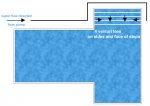I am sorry for so many questions. I have tried to research online about plumbing these jets around my steps and a hartford loop. There is very limited information, if any, on how to plumb this situation without a booster pump. Therefore, I do not understand completely how to do it.
In my simple mind, I had assumed that I would have a venturi tee in all four locations where I want the jets. Two on the wall of the side of the steps and two on the face of the second or third step shooting into the pool. I had planned to tie the waterline for all 4 returns together in series on their own line from the pump teminating in the last return from the pump.
Also, I assumed that plumbed up to the surface of the decking would be an air line where I would put a screw in fitting to adjust the airflow to each jetted return. In my mind, I assumed that each of these air lines would simply be a vertical pipe straight up from the tee flush with the decking and that each air line would be independent of each other one.
However, based upon the information you have given me, I am wondering if I am wrong and perhaps the air lines can also be tied together in series and maybe one single adjustable deck level fitting to adjust the air flow to all four jets. If that is true, at what point would the hartford loop be inserted? Would it go before the first jet? Again, sorry for the questions, but I cannot find anything online to guide me. If you know of a resource and can just point me in a direction, I will gladly read it on my own to design he plumbing for the step returns.
Here is the area of my pool I am discussing. The steps are 16 feet in length. I will not be using a booster pump for the air line.



